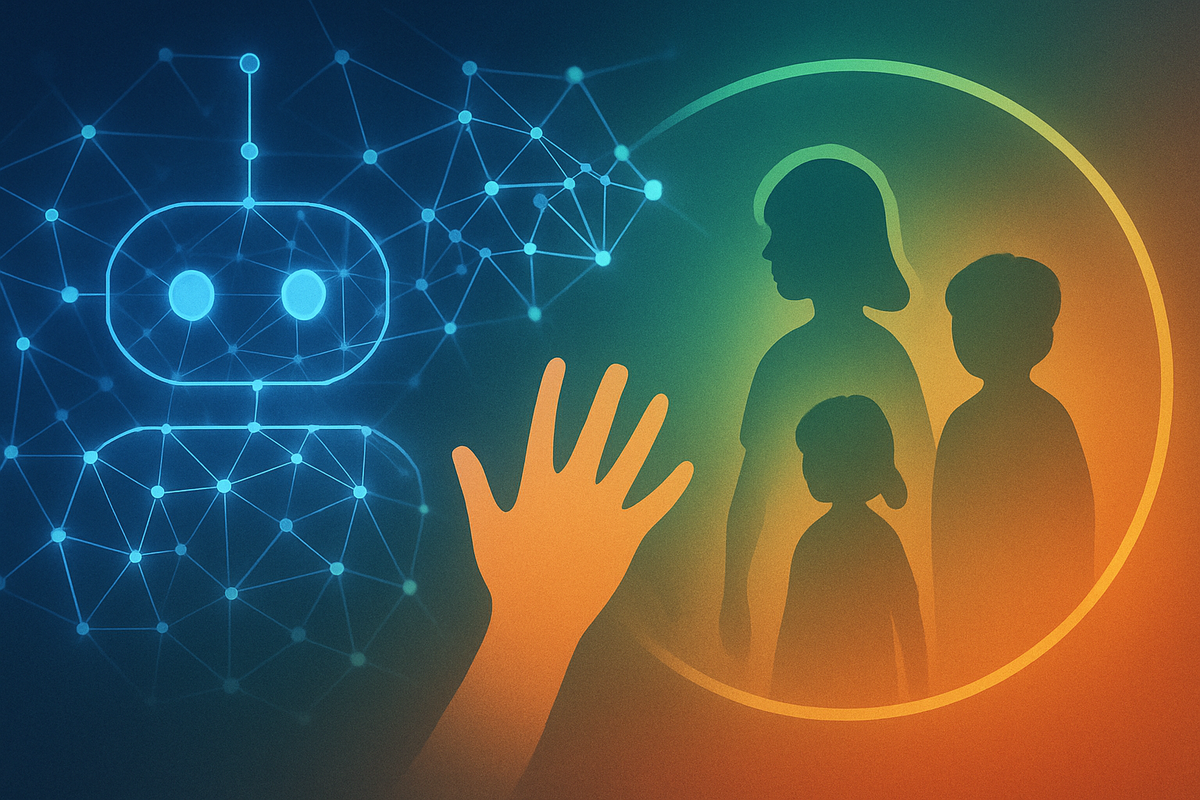
SACRAMENTO, CA – In a landmark legislative move, California Governor Gavin Newsom officially signed Senate Bill 243 (SB 243), often dubbed the "companion chatbot" bill, into law on October 13, 2025. This pivotal legislation marks California as the first state in the nation to specifically regulate AI companion chatbots, setting a precedent that could reverberate across the burgeoning artificial intelligence industry. The law, which takes effect on January 1, 2026, aims to create a safer digital environment for children and teens by mandating transparency and imposing strict content restrictions on AI interactions with minors.
The immediate implications for AI developers and platforms are substantial. Companies operating AI companion chatbots will face an urgent need to re-evaluate and overhaul their systems to comply with the new requirements. This includes implementing clear identity disclosures, recurring alerts for minor users, robust content filters against harmful material, and established crisis intervention protocols. The law's introduction of a private right of action also significantly elevates the legal stakes, exposing non-compliant entities to potential lawsuits and financial penalties, thereby compelling rapid adaptation and strict adherence.
Unpacking the Landmark Legislation: A New Era for AI Accountability
California's SB 243 is a comprehensive legislative effort designed to erect guardrails around the interaction between AI companion chatbots and young users. At its core, the law mandates that operators of these AI systems must explicitly disclose to all users, particularly minors, that they are engaging with an artificial intelligence rather than a human. For minors, this transparency is further reinforced by recurring alerts every three hours, serving as a constant reminder and encouraging breaks from prolonged AI interaction.
Beyond disclosure, the law takes a firm stance against harmful content. It unequivocally prohibits companion chatbots from facilitating discussions related to suicidal ideation, self-harm, or sexually explicit content when interacting with minors. To address these critical safety concerns, operators are required to implement and publicly disclose detailed protocols for crisis intervention. These protocols necessitate that chatbots respond to expressions of suicidal ideation or self-harm by directing users to professional crisis service providers, such as suicide hotlines. Furthermore, companies must maintain and implement age-appropriate content filters to prevent minors from encountering prohibited material and include a suitability disclosure statement indicating that companion chatbots may not be appropriate for all minor users. The legislative timeline saw the bill's signing on October 13, 2025, with an effective date of January 1, 2026, giving companies a tight window for compliance. Annual transparency and reporting requirements, including data on detected suicidal thoughts, will commence on July 1, 2027.
Key stakeholders involved in this legislative push include the California State Legislature, Governor Gavin Newsom, various child advocacy groups who championed the bill, and, on the other side, AI technology companies (e.g., Alphabet (NASDAQ: GOOGL), Meta Platforms (NASDAQ: META), Microsoft (NASDAQ: MSFT), OpenAI) who will bear the brunt of compliance. Initial reactions from the industry are likely to be a mix of cautious acceptance and accelerated efforts to ensure their AI models and user interfaces meet the stringent new standards. The private right of action, allowing individuals harmed by violations to seek damages up to $1,000 per incident, injunctive relief, and attorney's fees, is a particularly potent provision that is expected to drive meticulous compliance.
Market Shifts: Winners and Losers in the Wake of Regulation
The enactment of SB 243 is poised to significantly reshape the competitive landscape for companies operating in the AI chatbot space, creating both new challenges and opportunities. Companies that have already invested heavily in ethical AI development, robust content moderation, and child safety features are likely to emerge as relative "winners." These firms, often larger tech giants with substantial resources, may find it easier to adapt their existing frameworks to comply with California's new mandates. For instance, major players like Alphabet (NASDAQ: GOOGL) with its Google Bard, Meta Platforms (NASDAQ: META) with its various AI initiatives, and Microsoft (NASDAQ: MSFT) through its investment in OpenAI's ChatGPT, already possess significant infrastructure and legal teams to navigate complex regulatory environments. Their ability to swiftly integrate the required disclosures, age-appropriate filters, and crisis protocols could give them a competitive edge over smaller, less resourced startups.
Conversely, smaller AI chatbot developers and startups that cater to a younger demographic or offer "companion" style AI without strong prior emphasis on child safety measures could face significant hurdles. These companies may lack the financial and technical resources to quickly re-engineer their platforms, potentially leading to increased operational costs, delayed product launches, or even market exit if compliance proves too onerous. The private right of action also poses a disproportionate risk to smaller entities, as even a few successful lawsuits could cripple their operations. Furthermore, companies that rely on less transparent or more open-ended AI models without built-in safeguards will need to undertake substantial redevelopment, potentially impacting their user experience or core product offerings. The increased regulatory burden might also deter new entrants into the companion chatbot market targeting minors, thereby consolidating power among established players.
Beyond direct compliance costs, the law could also spur innovation in AI safety and moderation tools. Companies specializing in AI ethics, content filtering technologies, and age verification solutions might see an uptick in demand for their services. This could create a new niche market for specialized AI governance and compliance solutions, benefiting firms focused on these areas. However, for companies that fail to adapt, the consequences could include reputational damage, significant legal expenses, and a loss of user trust, particularly among parents and educators.
Broader Implications: A Catalyst for National AI Governance
California's SB 243 is not merely a state-level regulation; it represents a significant milestone in the broader global discourse surrounding AI governance and child protection. As the fifth-largest economy in the world and a global hub for technological innovation, California often sets legislative trends that are subsequently adopted by other states and even federal bodies. This law could serve as a blueprint for similar regulations across the United States, pushing for a national standard for AI safety, particularly concerning minors. The emphasis on transparency, age-appropriate content, and crisis intervention protocols aligns with growing international calls for ethical AI development, drawing parallels with comprehensive data privacy regulations like Europe's GDPR (General Data Protection Regulation) and the U.S.'s COPPA (Children's Online Privacy Protection Act).
The ripple effects of SB 243 are likely to extend beyond direct compliance. AI developers and platform providers may proactively implement similar safeguards across their entire user base, regardless of location, to ensure a consistent product experience and to prepare for potential future nationwide legislation. This could lead to a broader industry shift towards "safety by design" principles for AI, where ethical considerations and user protection are integrated from the initial stages of development. Competitors and partners in the AI ecosystem will need to assess their own practices and supply chains to ensure they align with these emerging standards, potentially leading to new industry best practices and certifications.
Historically, California has led the way in consumer protection and technology regulation, from environmental standards to data privacy. This latest move into AI regulation underscores a growing recognition among policymakers of the need to address the societal impacts of rapidly advancing technologies. The law highlights a crucial tension between technological innovation and public safety, particularly for vulnerable populations like children. It signals a governmental intent to not only encourage AI development but also to ensure it is deployed responsibly and ethically, setting a precedent that will undoubtedly inform future regulatory debates at both national and international levels.
The Road Ahead: Navigating the Evolving AI Landscape
The enactment of SB 243 Ushers in a period of intense adaptation and strategic recalibration for the AI industry. In the short term, companies will be racing against the January 1, 2026, effective date to implement the mandated disclosures, content filters, and crisis protocols. This will likely involve significant investment in engineering, legal, and compliance teams. We can expect a flurry of software updates, revised terms of service, and public announcements from AI chatbot operators detailing their compliance efforts. The initial months post-enforcement will also be critical for observing how the private right of action plays out, as early lawsuits could provide clearer guidance on the law's interpretation and enforcement.
Looking further ahead, the long-term possibilities include a fundamental shift in how AI companion chatbots are designed and marketed, especially for younger audiences. We may see a greater emphasis on educational and supervised AI interactions, with platforms offering parental controls and more transparent reporting mechanisms. Strategic pivots could involve companies diversifying their AI offerings to focus on adult users or developing entirely new product lines specifically tailored for child-safe AI, potentially in partnership with educational institutions or child development experts. This could open new market opportunities for AI that prioritizes well-being and learning, rather than just engagement.
However, challenges will also emerge. The cost of compliance could stifle innovation for smaller players, leading to market consolidation. There's also the ongoing technical challenge of effectively detecting and filtering nuanced harmful content in real-time AI conversations, which will require continuous advancement in AI moderation capabilities. Potential scenarios range from successful industry-wide adoption of robust safety standards, leading to increased public trust in AI, to a patchwork of state-specific regulations that complicate national AI deployment. Investors should watch for how major AI companies (e.g., NVIDIA (NASDAQ: NVDA), Advanced Micro Devices (NASDAQ: AMD), Palantir Technologies (NYSE: PLTR)) adapt their AI models and services to meet these new regulatory demands, as well as the emergence of specialized AI safety and compliance solutions providers.
A Watershed Moment for Responsible AI
California's SB 243 represents a watershed moment in the evolving narrative of artificial intelligence, firmly placing child protection at the forefront of AI development and deployment. The law's immediate impact will be felt by AI chatbot operators, who must swiftly implement significant changes to their platforms to ensure compliance by January 1, 2026. This includes transparent disclosures, recurring alerts for minors, stringent content filters against harmful interactions, and robust crisis intervention protocols. The private right of action introduces a new layer of accountability, making adherence to these regulations not just a best practice, but a legal imperative.
Moving forward, the market will likely see a bifurcation: companies that successfully integrate these safety measures will gain a competitive advantage and bolster public trust, while those that falter may face legal repercussions and reputational damage. This pioneering legislation is expected to catalyze a broader national and potentially international conversation on AI governance, prompting other jurisdictions to consider similar safeguards. Investors should closely monitor the compliance efforts of major tech companies and the emergence of specialized AI safety solutions. The long-term significance of SB 243 lies in its potential to redefine the ethical boundaries of AI interaction, fostering an environment where technological advancement is balanced with a steadfast commitment to societal well-being, particularly for the most vulnerable users. This law is not just about regulating chatbots; it's about shaping the future of responsible AI.
This content is intended for informational purposes only and is not financial advice





